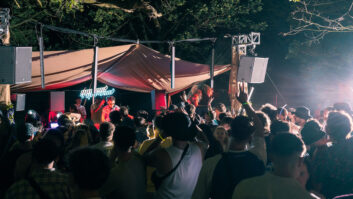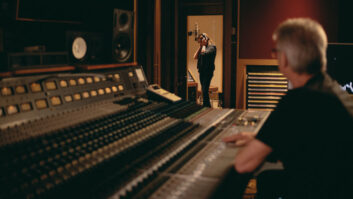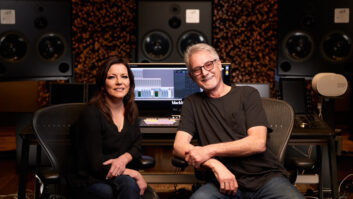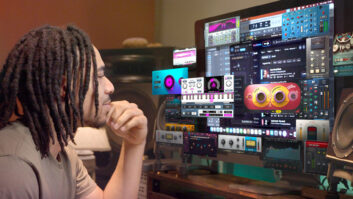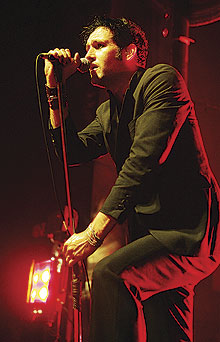
Vocalist/guitarist/programmer Sam Endicott
New York City — based The Bravery is touring in support of their first album (self-recorded and produced), bringing the same post-punk sensibilities that seethe through their self-titled release to the stage. The band is selling out clubs across the U.S. (including some dates as the opening act for Depeche Mode) before heading over to the UK. Mix caught up with FOH engineer/tour manager Keith Danforth and monitor engineer Scott Eisenberg at the Galaxy Theater in Santa Ana, Calif., in mid-September.

FOH engineer Keith Danforth
For the U.S. leg of the tour, front-of-house engineer Keith Danforth is relying on club-provided gear, including consoles. “If I am renting, it’s the Midas H3000,” Danforth says, using only 24 board inputs. However, Danforth carries a rack of gear, including an Eventide H3000, TC Electronic reverb, a Roland delay, dbx 160 compressors and a Drawmer quad gate, as well as a 24-track Alesis hard disk recorder. “We use it on shows we want to keep a record of. It might be if they play new songs or they play in a cool part of the world. We recorded most of our Asian dates and a couple of shows in Australia.
“Most of our soundcheck time goes to monitors,” he continues. “Giving the band what they want onstage is important: They play better and my job gets easier. The first couple of days I worked with them, the band’s manager, Peter Galli, was with us and helped familiarize me with some of the cues for solos and key parts.
“This band rocks! They give a lot at every performance and the crowd responds by going off with them. There is a lot of energy going back and forth at every show.”

Drummer Anthony Burulcich is using a small Yamaha MG102 mixer. He takes a couple of direct lines from a Mac G4 Powerbook running Digital Performer through a MOTU 828. Monitor engineer Scott Eisenberg also sends him two separate lines: a mix of his drums and another line of just his vocal. “He can then control the balances between those lines for his in-ears against the mix in the monitor,” Eisenberg says. Drum mics include SM91, Beta 52, SM57, Beta 98 and Audio-Technica AT2021.
When Mix caught up with monitor engineer Scott Eisenberg, the band had just started using Ultimate Ears IEMs, using a Crest board for the mixes. The toughest part? “This was all put together on the road since we’ve been touring pretty much non-stop,” Eisenberg says. “It’s taken a bit to work out the kinks, and the monitor mixes are constantly evolving as the guys start figuring out what they want in their ears. Everyone except Anthony [Burulcich, drums/backing vocals] is wireless. I definitely have seen a drop in the overall stage volume even though we’re still using wedges and sidefills for [bassist] Mike H. The vocals don’t have to be screaming and there’s less competition for volume.”

Guitarist Michael Zakarin
Singer Sam Endicott and guitarist Michael Zakarin are using Shure Beta 58s, while Burulcich uses an SM58 for his vocals. “I think the Betas work well for Sam because he’s got a wide dynamic range and they output a little hotter,” Eisenberg explains. “Anthony really belts it out, so the regular 58 suits him well, plus the pickup pattern works out better with the angle where his monitor usually sits. We’re using a combination of in-ears and open monitors. I was impressed with the durability of Sam’s mic — it hits the floor about 10 times a night at varying speeds. In the last month, I think he’s demolished three of them.

John Conway, synthesizers/programming/backing vocals
“From a production standpoint, it’s tough for bands at this stage of the game, especially when the band isn’t just guitar, bass and drums,” Eisenberg concludes. “You’re in a drastically different venue every night, with a different P.A., a different house crew and a relatively small touring crew. So a lot of it is making the best out of every crazy situation. We all try to help each other out because it really takes everyone to make the show go.”


